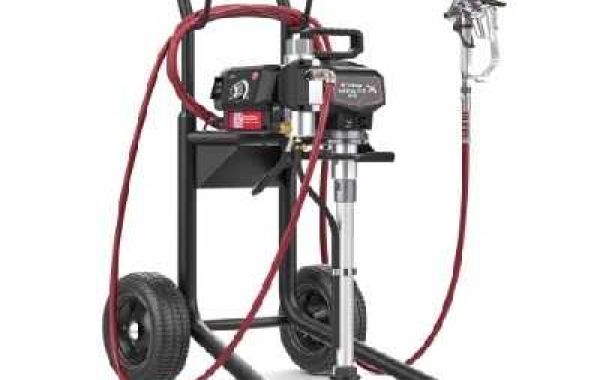A sprayer handle may seem like a small part of your paint sprayer, but it plays a major role in your comfort, control, and project results. Whether you're tackling a home renovation or a professional paint job, the right sprayer handle can make a noticeable difference in your workflow and final finish.
Let’s explore the top five features that define a high-quality sprayer handle so you can choose one that meets your needs and enhances your work.
Ergonomic Design for Comfort
Why Comfort Matters
Painting projects can take hours, especially if you're covering large surfaces or working on detailed finishes. A sprayer handle that’s uncomfortable to grip will lead to hand fatigue or wrist strain, affecting your results and possibly causing injury over time. Discomfort often leads to poor technique and uneven coats.
What to Look For
A quality handle should fit naturally in your hand. Look for handles with contoured shapes, rubberized or soft-touch grips, and a balanced weight. These features reduce hand stress and allow you to paint for longer periods without discomfort.
Some advanced handles even include vibration dampening to minimize strain during extended use, offering extra support when tackling bigger jobs.
Durable Construction Materials
Built to Last
Your sprayer handle will face paint, solvents, pressure, and rough handling. It needs to stand up to wear and tear without cracking, leaking, or breaking down during important tasks. A weak or poorly made handle can disrupt your workflow and cost valuable time.
What to Look For
Choose handles made from high-quality, durable materials such as stainless steel, reinforced polymers, or anodized aluminum. These materials resist corrosion, withstand pressure, and last through repeated use. Avoid cheap plastic handles—they may cost less upfront, but they often break or malfunction quickly, costing you more in the long run and potentially delaying your projects.
Responsive Trigger Mechanism
Precision at Your Fingertips
A smooth and responsive trigger gives you full control over the paint flow. This control is critical for creating clean, even coats and preventing paint runs or splatter, especially when working on trim or detailed areas.
What to Look For
Look for a sprayer handle with a trigger that moves easily without sticking. It should provide consistent pressure and reset quickly after each spray. Some models feature variable control triggers, which allow you to adjust spray output based on how hard you squeeze.
This feature gives you more flexibility for different surfaces or paint types and is especially useful for beginners learning control.
Compatibility with Different Spray Tips and Guns
Versatility is Key
A great sprayer handle should work with a range of spray guns and tips. This versatility allows you to switch between light coatings, textures, and fine finishes without buying multiple sprayers or investing in separate equipment for each task.
What to Look For
Check if the handle is compatible with various spray gun attachments and tip sizes. Most professional-grade handles offer a universal fit or use adapters to work with other systems. This makes it easier to upgrade or replace parts without needing a full new setup. Compatibility is especially important if you work on different project types—from indoor walls to outdoor fences or textured surfaces. It allows you to stay efficient and flexible on the job.
Easy Maintenance and Cleaning
Keep It Flowing Smoothly
Paint sprayers must stay clean to work properly, and that includes the handle. Dried paint, dust, or grime can clog internal parts or make the trigger stick, ultimately affecting the spray pattern and your finished results.
What to Look For
Choose a handle with a simple design that’s easy to disassemble and clean. Avoid models with too many small crevices or complicated mechanisms. Some handles include quick-flush valves or self-cleaning features, making cleanup easier after each job. If you're using thick or fast-drying coatings, this feature will save you valuable time and effort while keeping your sprayer running efficiently for longer.
Bonus Tips
Even with the best features, your choice depends on how you plan to use your sprayer. Here are a few extra tips to help you decide:
Match the Handle to Your Job Type
If you’re painting small furniture or doing detailed work, go for a lightweight, compact handle with fine trigger control. For large surfaces like walls, ceilings, or exteriors, prioritize comfort and durability since you’ll be spraying for long hours.
Try It Before You Buy
If possible, test how the handle feels in your hand. The right fit will reduce fatigue and improve your spraying accuracy. A little time spent choosing the right handle can save you hours of frustration later. It’s worth investing in a tool that helps you do your best work.
Final Thoughts
The sprayer handle might not seem like a big deal, but it plays a huge role in your painting performance. A poorly designed handle can lead to mistakes, discomfort, and lost time. On the other hand, a high-quality sprayer handle gives you control, comfort, and confidence with every spray.







